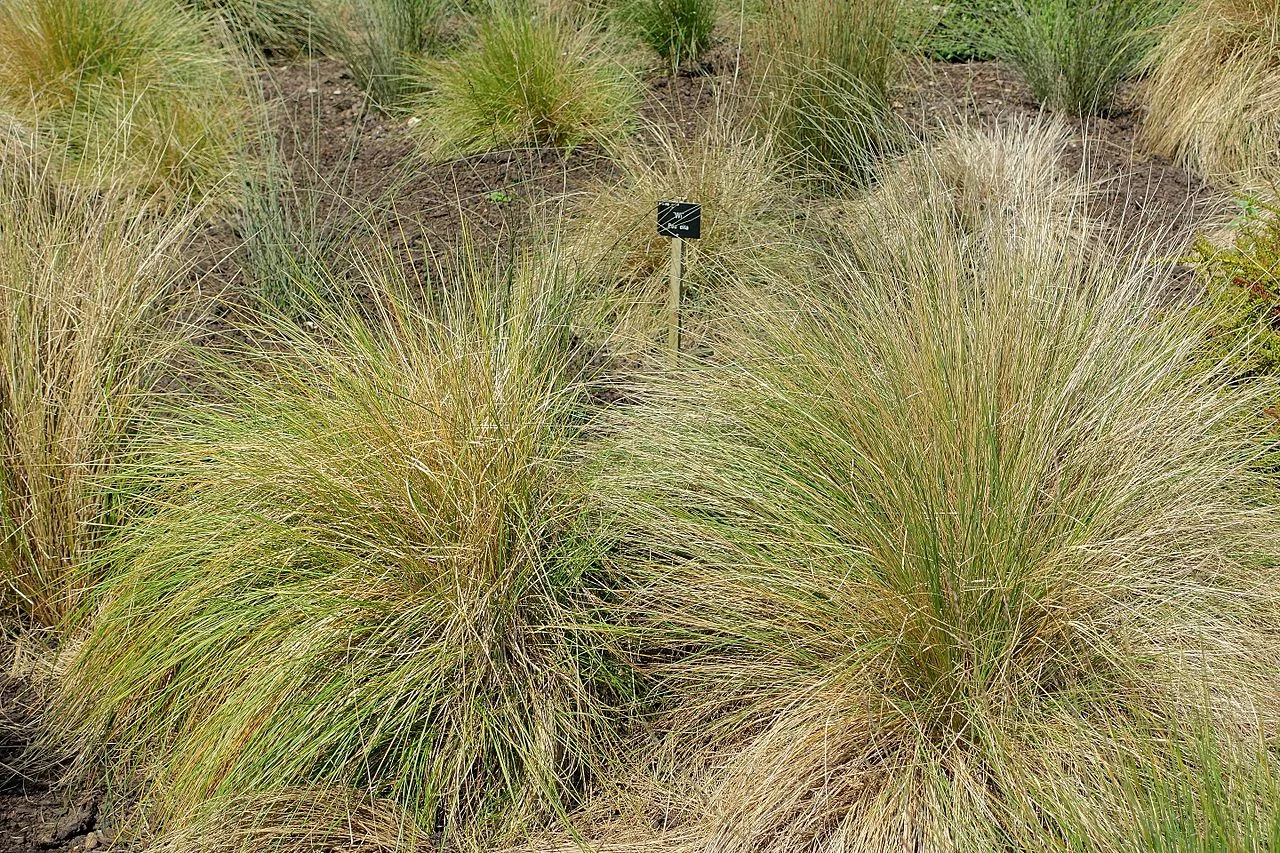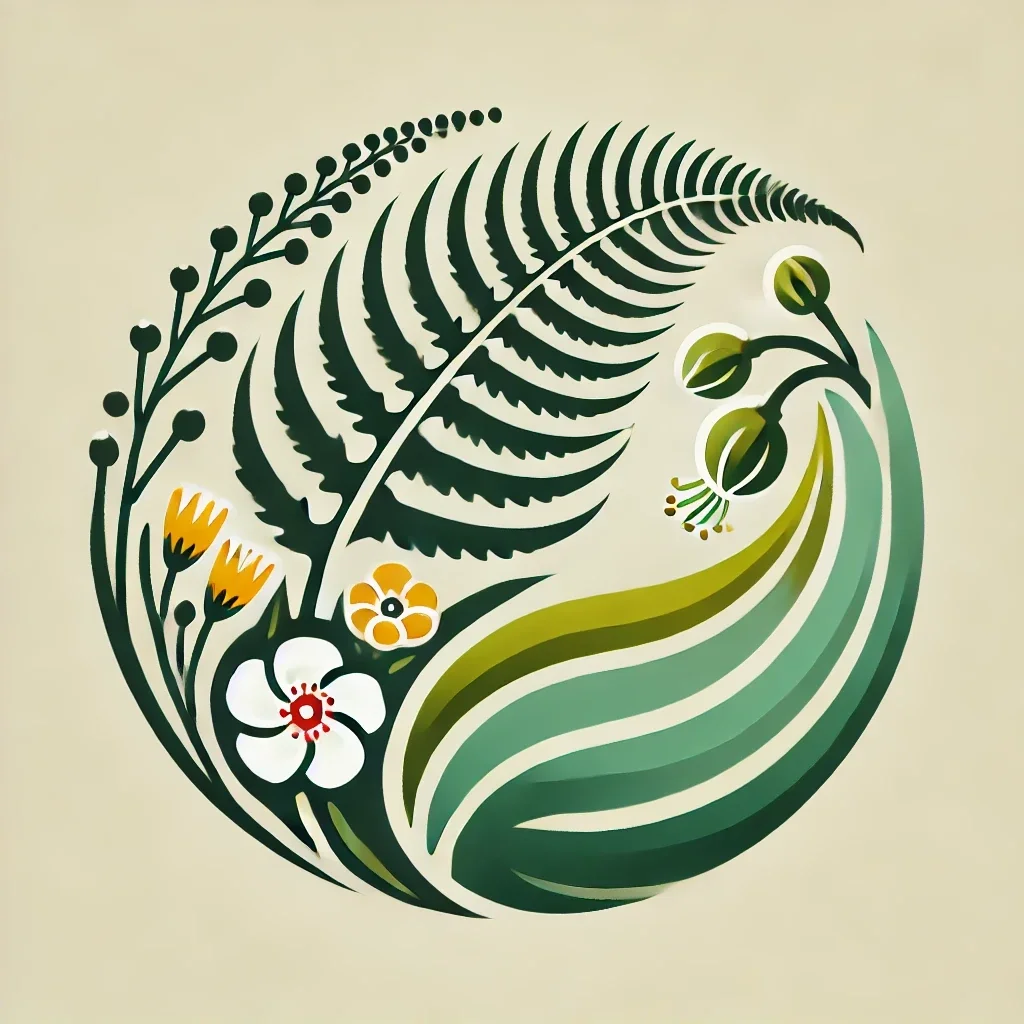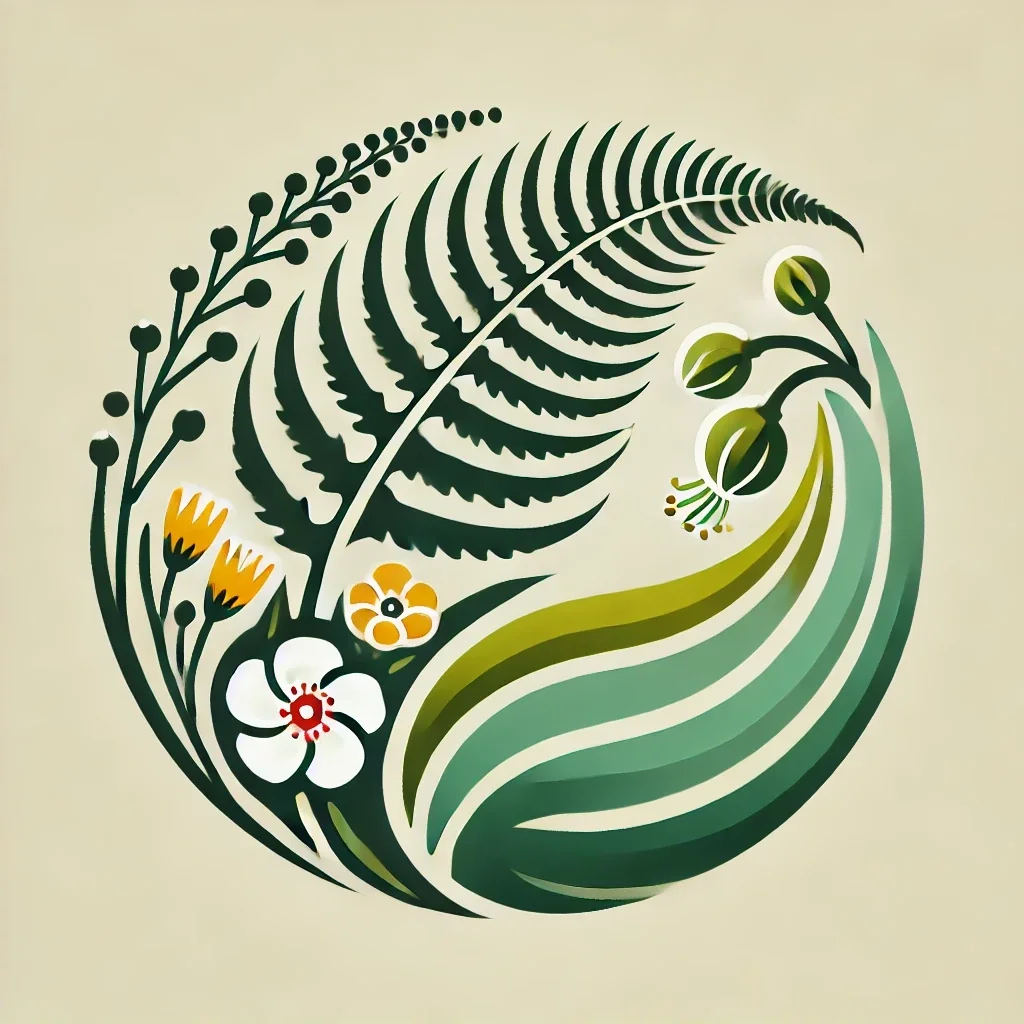
Silver Tussock
Poa cita
A fine, silver-green tussock grass for dry, sunny sites and naturalistic designs; excellent for movement and texture. Learn more in our native plants guide .

Plant Description
Botanical Features
Silver Tussock ( Poa cita ), also known as Wā or Pātītī, is a dense, clump-forming, evergreen grass native to New Zealand. It typically grows as an upright tussock, reaching heights of 0.3 to 1 meter, though it can sometimes hang up to 2 meters long down steep banks. It features fine, narrow, needle-like leaves that are typically shiny pale green, tawny green, or silver-gray, often aging to a greenish-brown or golden colour. The foliage forms dense mounds or tussocks, creating a graceful and airy effect. In early summer, it produces feathery flower heads or delicate bronze flower panicles that rise above the foliage. It is a fast-growing, clump-forming grass with a tufted habit. It is found throughout most of New Zealand, from coastal cliffs to subalpine areas.
Quick Facts
Overview
| Scientific Name | Poa Cita |
|---|---|
| Height | 0.6-1 m |
| Spread | 0.6-1 m clump |
| Light | Full sun |
| Water Needs | Low once established |
| Frost | Good |
| Frost Tolerance | Hardy once established |
| Salt Tolerance | Moderate; tolerates some coastal exposure |
| Growth Rate | Moderate |
| Lifespan | Perennial |
Climate Best Suited to
Regional climate suitability across major New Zealand cities.
Regional Suitability
| Whangārei | Ideal |
| Auckland | Ideal |
| Hamilton | Suitable |
| Rotorua | Suitable |
| Tauranga | Ideal |
| Gisborne | Ideal |
| New Plymouth | Ideal |
| Whanganui | Ideal |
| Palmerston North | Suitable |
| Napier | Ideal |
| Wellington | Ideal |
| Nelson | Ideal |
| Christchurch | Suitable |
| Dunedin | Suitable |
| Invercargill | Suitable |
| City | Climate Suitability |
|---|
Natural Habitat
Silver Tussock ( Poa cita ), also known as Wā or Pātītī, is a dense, clump-forming, evergreen grass native to New Zealand. It is widely distributed throughout the North Island and parts of the South Island, as well as on the Kermadec, Stewart Island/Rakiura, and Chatham Islands/Rēkohu.
Key Habitats Include:
- Grasslands and Pastures: It is a prominent component of grasslands and grazed pastures, often forming extensive tussocklands.
- Open Scrub and Forest: Silver Tussock can also be found in open scrub and forest environments, showcasing its adaptability to various light conditions.
- Coastal Cliffs: It thrives on coastal cliffs, demonstrating its tolerance to maritime exposure and windy conditions.
- Lowland to Subalpine: Its natural habitat ranges from lowland to subalpine areas, indicating its hardiness across a wide altitudinal gradient.
Preferred Conditions:
- Soil: It typically grows on relatively fertile soils, but is adaptable and can tolerate a wide range of soil conditions, including sandy, loamy, or clay soils, and both acidic and alkaline conditions.
- Moisture: While it occasionally occurs in wetlands, it is usually found in uplands (non-wetlands), preferring well-drained conditions. It is drought-tolerant once established.
- Light: It prefers full sun to partial shade, with full sun promoting the most compact and vibrant growth.
The presence of Poa cita in these diverse habitats underscores its ecological importance in contributing to the biodiversity and stability of New Zealand's natural landscapes, particularly in open and exposed environments.
Plant Conservation
Conservation
Poa cita , commonly known as silver tussock, is a grass species endemic to New Zealand. It is widespread across New Zealand, found throughout the North Island, South Island, Kermadec, Stewart Island/Rakiura, and Chatham Islands/Rēkohu. It inhabits a variety of environments from lowland to subalpine regions, including grasslands, grazed pastures, open scrub, forests, and coastal cliffs, generally preferring relatively fertile soils. Poa cita is known for its drought tolerance and thrives in full sun with well-drained, moisture-retentive soil. According to the 2023 New Zealand Threat Classification System (NZTCS), Poa cita is classified as "Not Threatened." This conservation status has remained consistent since at least 2004. While not considered threatened, Poa cita plays an important ecological role by supporting native biodiversity and contributing to habitat structure in New Zealand. Conservation efforts and management strategies for Poa cita often focus on maintaining its habitat and utilizing it in restoration projects. For instance, low-intensity sheep grazing can be beneficial in maintaining native plant species, including Poa cita , within modified short tussock grasslands. Its hardiness and adaptability also make it a suitable species for mass plantings and ecological restoration initiatives.
Growing Requirements
Soil
Well-drained, moderately fertile soils; avoid prolonged waterlogging.
Light
Performs in full sun to partial shade depending on species.
Water
Keep evenly moist while establishing; reduce irrigation as roots develop.
Temperature
Hardy in most regions of Aotearoa once established.
For Silver Tussock ( Poa cita ), choose a site with full sun and soil that is well-drained, moisture-retentive. Incorporate composted organic matter to improve structure and drainage. Plant with the crown or root collar at soil level, then apply a 5-8â¯cm mulch to moderate temperature, conserve moisture, and suppress weeds. Protect young plants from extremes while establishing and consider the stated frost tolerance (seasonal) when siting near exposure or cold air drains.
Planting Guide
Silver Tussock is a versatile and hardy native grass that is relatively easy to establish and maintain. Its fine, silvery-green foliage and graceful arching blades make it an excellent choice for a variety of garden settings, particularly in dry, sunny, and exposed environments. Proper planting and ongoing care will ensure this distinctive tussock thrives.
1. Site Selection:
- Sunlight: Silver Tussock thrives in full sun to partial shade. For the most vibrant silver colour and compact growth, a sunny spot is ideal.
- Soil: It prefers well-drained, relatively fertile soils but is highly adaptable to a wide range of soil conditions, including sandy, loamy, or clay soils, and both acidic and alkaline conditions. Good drainage is crucial to prevent root rot.
- Exposure: It is exceptionally tolerant of coastal conditions, high winds, and salt spray, making it perfect for seaside gardens, exposed banks, or rockeries. It is also very frost-hardy.
2. Planting Instructions:
- When to Plant: The best time to plant Silver Tussock is in spring or autumn, when temperatures are mild and rainfall is more reliable. This allows the plant to establish its root system before the extremes of summer or winter.
- Preparation: Prepare the planting site by clearing weeds and, if necessary, amending the soil with compost or other organic matter to improve drainage and fertility. Dig a hole that is twice the width of the root ball and to the same depth.
- Placement: Gently remove the plant from its container, minimizing root disturbance. Plant at the same level as it was in the container. Backfill the hole with soil, gently firming it around the roots to remove air pockets.
- Watering: Water thoroughly immediately after planting to settle the soil.
- Spacing: For mass planting or groundcover, space plants about 50-70 cm apart to allow them to form a continuous display. For individual specimens, allow at least 1 meter for its mature spread.
3. Ongoing Care:
- Watering: Water regularly during the first year to help establish a strong root system. Once established, it is highly drought-tolerant and requires minimal watering, only during prolonged dry spells.
- Mulching: Apply a light layer of gravel or bark mulch around the base of the plant to retain moisture, suppress weeds, and regulate soil temperature. Keep the mulch clear of the crown to prevent rot.
- Fertilizing: A light application of a balanced organic fertilizer in spring can support healthy growth, but avoid overfeeding, as it is adapted to low-nutrient soils.
- Pruning: Silver Tussock requires minimal pruning. Remove any spent flower stalks to tidy the plant. Annually, in late winter or early spring, comb out or trim back old, brown foliage to encourage fresh growth and maintain a tidy appearance.
- Pests and Diseases: It is generally disease and pest-free. Monitor for any signs of stress or unusual growth.
Ecosystem Notes
- Soil protection: Dense bases reduce erosion and maintain soil structure.
- Fire and drought: Adapted to dry summers; avoid frequent burning in plantings.
- Associates: Cushion plants, hebes, and other dryland species in lean soils.
Uses and Significance
Garden and Restoration
A fine, silver-green tussock grass for dry, sunny sites and naturalistic designs; excellent for movement and texture.
- Dry borders
- Mass plantings and restoration
Sow fresh seed of Silver Tussock thinly on a gritty, free-draining mix and keep evenly moist until germination. Prick out into small cells early to develop sturdy root systems and avoid check.
Cultural Significance
Cultural Importance
High-Country Identity
Silver tussock is emblematic of eastern South Island grasslands. It features in restoration, farm shelter, and amenity plantings that reflect the region's open tussock landscapes.
Poa cita , commonly known as silver tussock, holds cultural significance primarily through its ecological role and its use in landscaping and restoration. As an endemic New Zealand grass, it is a vital component of native grasslands and contributes to the unique biodiversity of the country. Its dense tussock formations are crucial for stabilizing soils and preventing erosion, particularly in exposed environments. It also provides shelter and food for various native animals and insects. While specific traditional Māori medicinal uses for Poa cita are not widely documented, grasses in general have played a role in indigenous cultures for various practical purposes. In contemporary settings, Poa cita is valued for its aesthetic appeal in naturalistic designs, mass plantings, and coastal gardens, and its hardiness makes it suitable for ecological restoration initiatives.
Landscaping Ideas
Movement and Texture
- Mass planting: Drift plant for a silver, wind-responsive matrix.
- Dry borders: Pair with Raoulia , Chionochloa , and Olearia .
- Containers: Works in big, free-draining pots for modern, low-care accents.
Seasonal Care Calendar
Spring
- Plant and mulch
- Protect new growth from weeds
Summer
- Deep watering in drought
- Monitor pests
Autumn
- Light formative pruning
- Top up mulch
Winter
- Plant eco-sourced stock
- Stake in windy sites
Pruning and Maintenance
Techniques and Timing
Generally minimal; formative work when young and removal of damaged wood.
Prune Silver Tussock lightly to maintain structure; remove damaged shoots and avoid hard cuts on older wood.
How to Grow Silver Tussock
Silver Tussock ( Poa cita ) is a hardy, fine-leaved tussock grass that is easily grown from seed and readily divided. It prefers free-draining soils in full sun and benefits from regular moisture during establishment.
From Seed
Sow fresh, cleaned seed in late winter to spring or in autumn. Use a free-draining seed-raising mix and sow thinly on the surface, covering very lightly with fine medium. Keep evenly moist and provide bright light at cool to mild temperatures (10-18°C). Germination is typically quick. Prick out crowded seedlings into cell trays or small pots, growing on with good light and steady moisture. Harden off before planting out.
Division of Clumps
Divide established clumps in autumn or early spring when soil moisture is reliable. Lift the plant, split the crown into sections with several growing points and healthy roots, and replant divisions at the same depth. Water well to settle soil and keep evenly moist until re-established.
Planting and Establishment
Plant in full sun with well-drained soil; avoid waterlogged sites. Space to allow natural spread and airflow. Water regularly through the first growing season, then reduce. Apply a light, balanced slow-release fertiliser in spring if growth is poor. Comb out or trim spent foliage annually to refresh the clump and maintain a tidy habit.
Pests and Diseases
Lean and Dry to Stay Healthy
- Crown rot: Avoid rich, wet soils; ensure excellent drainage.
- Rust/fungal spots: Improve airflow; remove spent foliage in late winter.
- Grass grubs: Can loosen clumps; encourage predators and avoid overwatering.
Bonus Tip
Comb out dead thatch with gloved hands at winter-s end rather than hard cutting-this preserves the natural fountain form and reduces rot risk at the crown.







